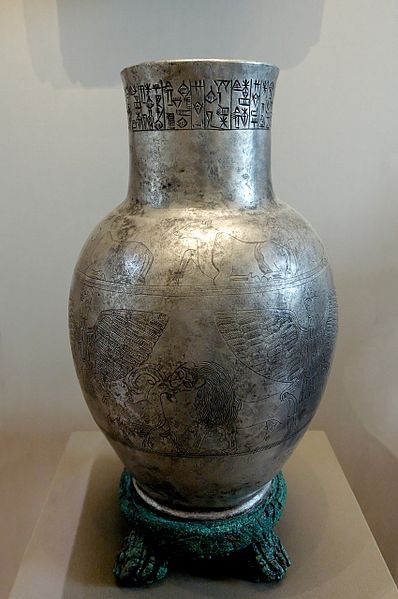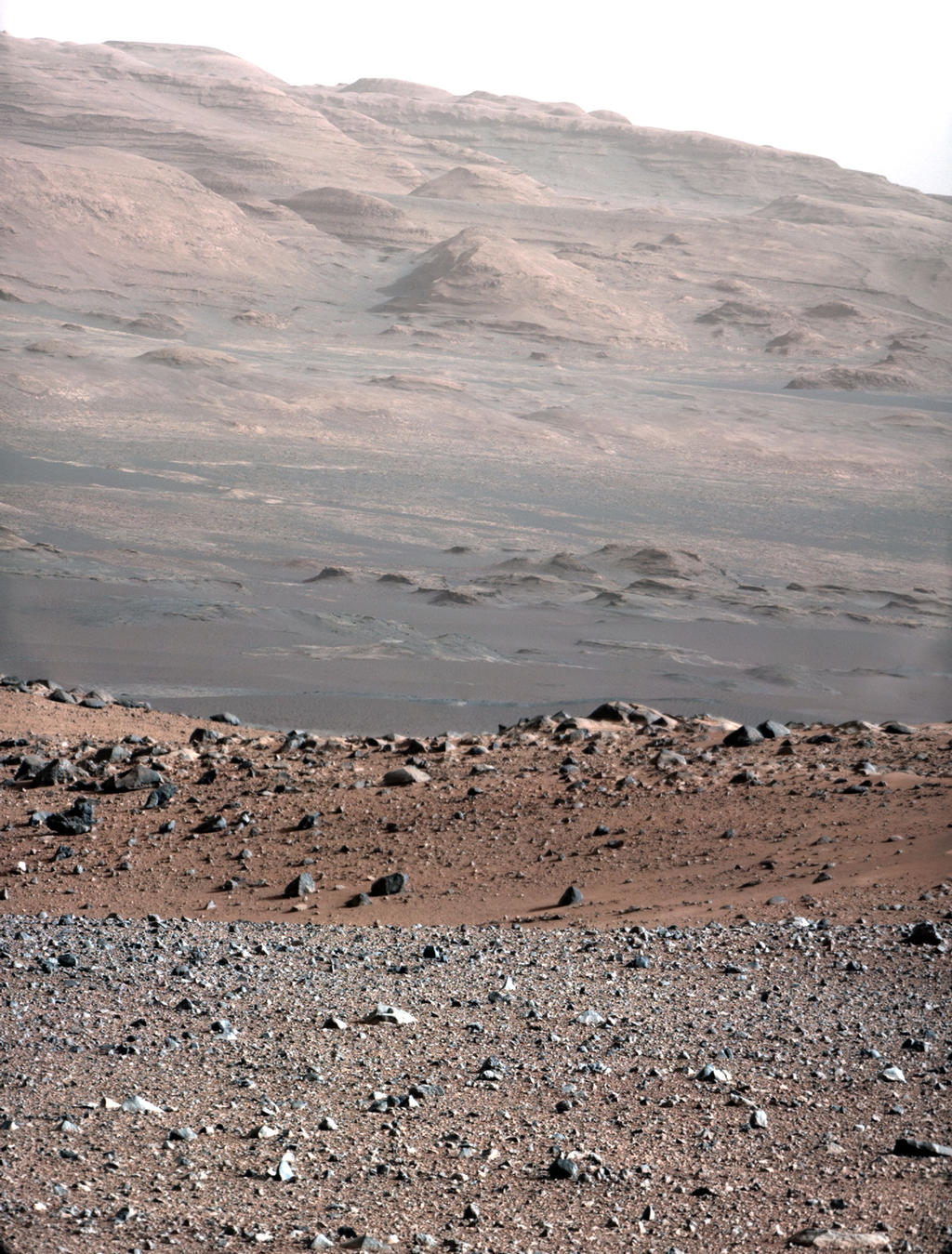
Thursday, December 27, 2012
Friday, December 21, 2012
astro picture for the day/ plus Golden Bough generalisation of magic and natural magic(mathematical science)
image credit T.A. Rector (University of Alaska Anchorage) and WIYN/NOAO/AURA/NSF
There's actually bigger downloads of this image; one would have taken me forty minutes to get the whole image; i didn't bother.
other larger downloadables of this cygnus loop supernova image
------------------------------thought for the day extra
Seems that I posted about the differences between magic and natural magic(mathematics/science) awhile ago. 7/16/12
I've finally gotten around to reading "The Golden Bough". Actually, I don't think I'll bother finishing it; seems the main themes have already repeated conclusions repeated; and, the rest of the book appears to be review of various sungods(Osirus, Adonis, Dionysius . . . can anybody tell the similarity linguistically to Jesus?). Although for James Frazer, author of the book, these are more vegetation and farming cycle gods; but, the fact is that the cycle of farming goes with the cycle of the seasons - something astronomical and connected with the sun. So, his research does indirectly confirm the B.C. timeframe predating of the Jesus Christ mythology. Many people have noted that Jesus's turning water into wine must be a plagerism of the Dionysius myth, actually. But, Mr Frazer's book gets a lot more into what I've been trying to point out about the relation of mathematical science and mythology(which modern comparitive mythology researchers don't seem to want to listen to).
What I've been trying to say is that mythology is poetry; poetry is analogy, and analogy is a major property of mathematics and mathematical science. And, I've tried to trace the evolution of knowledge from ignorance to mathematics; and so, this book has been great for me!
James Frazer shows that before there was religion, there was a world of magic and people called sorcerers who tried to get nature to do their wishes by means of this magic. Frazer defines religion is a way convenient for the history he found. For instance, he shows that the Australian aboriginies are into magic and the never evolved to this higher idea of religion(basically, religion is institutionalised magic and magic coupled to ethics and one should say the Priest/King who says they rule by divine right). In this way, the Aborigines of Australia had preserved the true primitive state before all this religion developed. What the christian world would call the pagan African religions are actually people who have evolved a higher state of religion; and of course, the christians will tell you they have a higher state of religion than the pagans; but, see my blog! Getting back to the whole magic thing . . . ;
In my post about magic versus mathematics as white magic, I showed some examples of how religions and magic tries to get nature to do what we want by going backwards. Frazer gives a whole book showing many more examples. In fact, his original research went into twelve volumes. All his references are in the twelve volumes; so, I won't try to reference and I didn't jot any of them down; i'll just reference his book. So, I and Frazer and even Jacob Bronowski(and others like Ernst Casserir) have established the connections and differences between mathematics and previous efforts to understand the universe(mythology), and even some of its backwards nature. Frazer gets into how magic and religion goes wrong as well.
Mr Frazer pushes the age of similar religions to Jesus Christ much further than even the sungod researchers of today; in that way, he's been ahead of them(although, sungod researchers reference and know about his work; they often don't like the idea of comparison and differences between mathematics and mythology as I've already noted) for awhile now! And, he does so by a most remarkable commonality between all these different cultures religions; they all have these Priest/Kings who are beheaded and otherwise killed annually; generally yearly(nobody could right or research this book of his today; most cultures have moved on from these pagan practices). Basically, people mythologized the heavens, the heavens symbolize the farming cycles, and since people's lives depend on the food, if something goes wrong with the harvest at the end of a years cylce, the Priest/King gets beheaded(or killed in some manner), and they bring in a new Priest/King and hopefully, he's a better magician than the last one!
Here I should note say Romans 13(of the Christian New Testament) says, rulers rule by divine right, and pay your taxes; wonder who wrote this? There's many mentions of "pay unto caesar what is his" in both the gospels and Pauline epistles as well. Also, the Pauline Epistle called Titus also has kings get to rule by divine right. I'm tempted to argue here that the Roman rulers made christianity so they can rule by divine right and not be struck down on a yearly cycle if the crops fail in a given year! Jesus Christ is a friendly messiah; he dies for your sins; he makes the sacrifice for your bullshit; before, a sacrifice was made in flesh and blood, and no roman ruler wanted that!
James Frazer shows much more of the various customs and where they come from; things like jewelry comes from trying to catch the soul from escaping the body. Where christmas trees and even christmas comes from. But, he also gets into taboos and superstitions of all cultures.
Part of what I've tried to show, argue against is the refusal of the supernatural religious to deny a new scientific theory(that's been proven correct experimentally) because it conflicts with their holy sacred not to be touched beliefs. One major such ancient denial of ancient peoples was iron. Basically, they had a taboo against iron. Point is anything new and novel excites suspicion and distrust; the fact of taboos against iron is proof that taboos are made to stop innovation and new ideas. Mankind is the technologically and scientific dependent species; science is the peacefull adventure; how can mankind understand this when they play such taboo games?
I should have defined taboos earlier. James Frazer shows there's positive magic and negative magic; positive magic are charms; negative magic leads to taboos. There's two kinds of magic - immitative(analogy) and contact. And, as already indicated, the negative magic leads to taboos. Taboos and superstitions lead to my point about people playing vagueness games; they're always using evasive language to stop further thought or to trick; some of my favorites are "believe and you will believe", and "god works in mysterious ways." I like to rewatch a nanotech show not generally available that has for instance Marvin Minky saying, when we finally get nanomanufacturing going, perhaps, we'll build a little car(and he rolls a lego car back and forth); i mean, he's so affraid to say, well, maybe we'll build an a.i. or a space rocket to launch a space station; he's so affraid of som many people pointing out some taboos and fears, that he says, "maybe we'll just build a little car." I find that most people talk in these ways; they're constantly throwing out words to test what your beliefs are; they can't just state facts and logic and not fear reprisal from me or someone else. Can you imagine scientists and mathematians writing papers where they don't lay down what they did, but say, "did we accomplish our goal?" Or even "what was the solution to the experiment or calculation we just did?" Mathematics and science is about testing ideas without buying the solution or holding someone up at gunpoint to get the right answer. Or even the mere verbal threat of what does this or that result mean socio-politicaly.
Yet, I'm finding that mathematicians and scientists are forced to mix religion(which never says, "question me") and mathematical science - whether they want to or not. It's increasingling that they grow up wanting to. But, I'm also finding that others do so almost as if a parlay. Parlay of "Pirates of the Carribean" is a recent finding of vagueness gaming and mixing up religion/science(as christianity did; see for instance this wiki of Origin where it's stated that Origin wanted to make chrisitanity a higher philosophy than hellenism . . . Greek/Plato mathematical philosophy . . . http://en.wikipedia.org/wiki/Origen ) . Basically, all the 'everyone's religion is correct at the same time" is just a big parlay game because argueing with the religious gets nowhere or violent; so everyone says everyone is correct, and there is to be no fact finding or logical anaylses of anybody's theories; how does mankind progress with this parlay philosophy?
I wanted to get the first parlay by the Elizabeth Swan character in "Pirates of the Carribean" but, I guess this will work just fine!
I was remembered something about Pirates of the Carribean having this parlay concept; i was just like this Jack Sparrow character trying to get the word off the tip of my tongue!
-----------------------------------science/technology extra for the day
here's a good sign that the recent ability to engineer proteins by means of artifical evolution is powerfull enough to make arbitrary nanomechanical parts.
I believe i've already linked to an article reporting the recent advances in artifically evolving/engineering proteins; i think that article even mentions a researcher saying he's going full speed ahead on using this ability to making protein nanomanufacturing; the article above is a good sign that he and others can accompish this pretty soon; if not this year, then probably before the next year is out(meaning two years).
-------------------------------note edit extra,
I grew up listening to this album from time to time; little did I know that someday I'd learn where this "John Barleycorn must die" weird album and song idea came from. I found it in James Frazier's "Golden Bough"!
Tuesday, December 18, 2012
astro picture for the day
ESA/NASA Hubble Space Telescope image
-----------------------------------------------------------------thought for the day
In my previous incarnation of this blog, I mentioned Cardano who more or less stole Tartaglia's solution to the cubic equation and then innovated complex numbers to solve cubics. I mentioned that in his biography, he mentions how he'd torture himself to ease the pains of life; how he'd growl at people to instill fear in them. I also mentioned how in his later years, in his collaborations with a Ferrari(who solved the general closed form fourth degree equation), he became less of a fear monger. I mentioned his biography because it was proof that people fear monger. I've been trying to argue that people fear monger only to be thrown into a psych ward for saying so. I've shown that in general, the religious fear monger to get their way(you're going to hell if you don't believe in me and my god; Jesus Christ says this also), and that some mathematical scientists, or even the majority through time as they grow older perhaps, reason, and that reason is the peacefull way for humanity; and, that's a big part of why I wrote the previous incarnation of this blog and more or less why I've decided to pretty much put it back up. Well, I've found another interesting proof of fear mongering instead of reason to get ones way - torture instruments!
People torture and use torture instruments for many reasons; sometimes they want to instill fear in the populace; other times however, it's because people are acting up; they can't get the information out of them peacefully, so in times of desperation, people resort to torture to get valuable information out of them. No matter how one looks at the very fact of torture instruments, torture instruments are proof of people playing vagueness games and fear mongering.
I'm not sure what this is; but, it looks gruesome enough!
--------------------------------------------science/tech news for the day!
Dwave goes from a hundred to a thousand qbits!
Sunday, December 16, 2012
astro picture for the day/Saturn V thought for the day
Image Credit: Hubble Legacy Archive, ESA, NASA; Processing - Donald Waid
Planet Earth:Tales from other Planets P2
Planet Earth:Tales from other Planets P3
Planet Earth:Tales from other Planets P4
Planet Earth:Tales from other Planets P5
Planet Earth:Tales from other Planets P6
I show this episode of "Planet Earth" because it involves the Saturn V and the Apollo program's discoveries and rock collecting; still, the furthest Humans have ever explored on their own(without just robots). Note: there's now 2 Planet Earth video series; the most recent is good photography and not bad intellectually; but, it unfortunatelly uses the same title and is not as intellectual as the Planet Earth video series I grew up with.
Anyways, Geologists knew that the rocks of the Earth have generally been turned over; we don't have the original crust; and they suspected that the Moon holds clues and has rocks that go back much further to the beginning of our solar system. We couldn't get there till around 1968 with the Saturn V.
The Saturn V is still the most powerfull rocket ever built by mankind(Nasa engineers recently made a rocket, turned it on braced just to prove they can build a bigger more powerfull rocket; i guess there's been some recent public outcry that we havn't gotten back to the moon; Nasa's solution, just do a earth based demonstration).
The Saturn V rocket was built to a program design decided in the early 1960s. Seems that Werner Von Braun and his rocket team wanted a multi rocket launch that would send up the spaceship that would be assembled in orbit; but, others wanted to make one gigantic rocket. Werner Von Braun's plan would have been more adaptable to missions to other planets; the one giant rocket would just barelly get a man to land on the moon; the selected the one giant rocket. See, for every pound of the manned spaceship that would orbit the moon and land on the moon, you'd need a certain large proportion more(that would be directly proportional) mass and energy of fuel in the lower rocket stages. This is why Nasa and Saturn V rocket engineers say the apollo spacecraft is such a great technological feat; it stuffs all the navigational, environmental and the ability to withstand the twenty thousand miles per hour descent back into Earth's atmosphere and so on; but, the point is that the program design led to this just barelly being able to land on the Moon. Recently, lots of Apollo program and Apollo 11 landing videos like to point out how if it wasn't for the great piloting of Neil Armstrong to land the Eagle with just thirty seconds left of fuel; if they had ran out, they couldn't have launched back up into lunar orbit much less get back to Earth. See, Neil Armstrong noticed that were they wanted to land was too rocky, so he had to power up a little bit, and he only had less than a minute of fuel left to decide whereelse to land it; if he doesn't decide, he crash lands somewhere, or if he does and doesn't have any fuel left, well . . . ; but, the point that few make is that this was all a result of the mission design decided for no other reason than to land a man on the moon before "this decade was out."
Getting back to the point about how every pound not scrapped off the apollo spacecraft at the very top of the Satun V means that much more fuel and metal at the very bottom or first stage rocket. As it turned out, the first stage rocket design was finalized and in production before people realised this; this greatly constrained the second stage of the Satun V; it's universally recognized that the second stage is the masterpiece of the Saturn V. It is the liquid oxygen/hydrogen stage of the rocket because of this; they didn't want to use liquid oxygen/hydrogen because it's so technologically hard to do. Rocket engineers like to point out that they needed to do some pretty sophisticated materials science to make the blunt nose solution of the apollo reentry craft work. The materials science for the second stage is even more astounding; they had to find a material that didn't turn brittle when in contact with liquid oxygen/hydrogen; i'd have to look it up for the exact name, but they found a novel material that actually gets harder with the colder temperatures of liquid oxygen/hydrogen! This is not just sheet metal or steel! What's more, the second stage engineers(see my Harrison Storms post just below this post) had to scrape away all the weight they could to make room for bigger payloads above. I'm still not sure I understand the internal structural elements of the second stage; but, they describe it as an arch solution. They had to invent novel machine tools in clean rooms to make sure that all weight possible was scraped off; what's more they x-rayed and sonar scanned every inch of the fabricated structural elements of the second stage to make sure there were no structural faults. They found they could not just assemble it horizontally, but they had to do so vertically; they had to make assembly procedures for the second stage that had to be followed to the letter even in the Saturn V assembly building; this was a delicate instrument!
Nasa engineers statistically analysed every bolt; they mapped out where every bolt came from all the way back to the mine the material came from.
When the Saturn V rocket was on the launch pad, hugh liquid oxygen/hydrogen pumps had to fuel the Saturn V in a precise scheduled and calculated manor right before launch. I can't seem to find a picture of these pumps with a quick google search; but, I recall seeing these.
The parachutes turn out to be a novel technological solution as well, they needed strong material and very largue parachutes for the reentry spacecraft; and, they needed to stuff it in a very small volume; they manged to use a vacuum to suck out all the air from between the parachute material fibers; the result was the parachutes were stuffed into a very small volume at such a density as hard wood.
People like to say that one of the side benefits of the Apollo space program was that we got to see our home world planet Earth from space crystal clear.
and of course,
1969: Apollo 11 (NASA)
The Incredible Journey of Apollo 12
Apollo 13 - Houston, We've Got A Problem
Apollo 14: Mission to Fra Mauro 1971 NASA 3rd Moon Landing Alan Shepard
Apollo 15 "In the Mountains of the Moon" - NASA Space Program & Moon Landings
Apollo 16 "Nothing So Hidden" - NASA Space Program & Moon Landings Documentary
Apollo 17 "On The Shoulders of Giants" - NASA Space Program & Moon Landings
People are also eager that we should go to space without all our past baggage. People fear this group or that group going and spreading their false ideas. Well, this is kind of what I've tried to do in this blog; to make a unified factual/logical understanding of everything. But, as Jacob Bronowski says, "These people are all anxious that we shall behave well, and yet that we shall not question how we behave."
My effort here of course can only outline and point the way. It almost certainly will not be listened to by the time the nano-era will come. I think I've shown this is possible; i've argued my viewpoint is not so bad even if there's some harsh realities humanity must face; i believe humanity should question and put their religions on the shelf and let them collect dust. But, getting to some science/tech news for the day . . .
A month or so ago, both the dna and protein folding pathways to the nano-era made pretty good breakthroughs.
protein folding becomes reliable enough to make arbitrary nanomechanical parts and probably enzyme like chemical reaction specificity
Dna-nanomanufacturing goes from a given nanostructure in weeks, to days/hours, to now minutes!
Moving beyond Paul Rothemund's dna-origami(which improved on Ned Seemans pioneering efforts)
Dna-Nanomanufacturing has added chemical reactivity to its abilities Dna-nanomanufacturing has always had one of the key properties for nanomanufacturing - self-assembly; now, it had the other key property; chemical reactivity.
The protein folding and the dna-nanoblocks that go beyond Paul Rothemund's "dna-origami" was announced about a month ago. The dna-nanomanufacturing of arbitrary nanomechanical structures with Paul Rothemund's single strand origami approach was announced a few days ago. Bottom line, I'd expect the ability to make non-Drexler daimondoid nanomanufacturing nanofactories in two months or less; they can design, build and test nanomachines in a single day now! Dna-nanomanufacturing can remake the world in two years or so; lots of people will probably work on that; the Drexler crowd will not waste time; they will work to bootstrap from dna-nanomanufacturing to a more general capability nanomanufacturing ability(probably combining dna-nanomanufacturing and protein folding and artifical proteins; i'm forgetting the words). And, then they'll use that to bootstrap to daimondoid nanomanufacturing. However the future happens, the future is now.
There's also great work in quantum computers. But, i won't link there right now.
Saturday, December 8, 2012
quote for the day
"The things that are going to give us trouble are the things we havn't thought of yet." - Harrison Storms
What can you say for Harrison Storms? What a resume! B-25(I've been in a B-25 - crawling around. I got a side cramp when crawling from the bomb bay into the cockpit; i laughed thinking that if this happened while I was in ww2 I would have been dead!), P-51 mustang, the various F-100s star sabres, X-15 spaceplane, the XB-70 Valkyrie, and the S-2 rocket(the second stage of the Saturn V rocket which is actually the high tech piece of the Saturn V). Harrison Storms unfortunaitely ended his career with a black spot; he was the 'stupid one' who made a 100% oxygen cabin for the Apollo man module which ended up killing Gus Grissam(a space enthusiast favorite), Chaffee and White. Harrison Storms was willing to push boundaries.
What can you say for Harrison Storms? What a resume! B-25(I've been in a B-25 - crawling around. I got a side cramp when crawling from the bomb bay into the cockpit; i laughed thinking that if this happened while I was in ww2 I would have been dead!), P-51 mustang, the various F-100s star sabres, X-15 spaceplane, the XB-70 Valkyrie, and the S-2 rocket(the second stage of the Saturn V rocket which is actually the high tech piece of the Saturn V). Harrison Storms unfortunaitely ended his career with a black spot; he was the 'stupid one' who made a 100% oxygen cabin for the Apollo man module which ended up killing Gus Grissam(a space enthusiast favorite), Chaffee and White. Harrison Storms was willing to push boundaries.
Tuesday, October 30, 2012
astro picture for the day/ gangs/cults/religions extra
Image Credit & Copyright: Adam Block, Mt. Lemmon SkyCenter, University of Arizona
Gangs reason by fear instead of reason; cults, gands, and religions are all the same. They all have a ten commandments. All gangland videos show the same thing; use of fear and vagueness games instead of reason, ten commandments of some sort; chain of command.
Mathematics and religion have something in common; they have analogy. But, one is about being precise, constructive, the other is about being vague and is not into being factual. Mythology may not always be religion, but it quickly moves towards ethics to make it significant where it wouldn't be. If you read the ten commandments for instance, in Exodus 20 and Dueteronomy 5. The good things are just the last five commandmetns; the first commandments are all kind similar to one another; they all say, believe in me and no one else. Every dictator in history said "I love you; but, if you leave me, I'll tear your balls off." This is what the Ten commandments really are saying. The effort to make one god fits the dictatorship effort; believe in me and no-one else. Who else uses ten commandments of some sort? Gangs.
Gangs always have a mythology, and a rules to follow, a flowchart of who's in charge. Another term for gangs would be cults. Cults would be characterized by the use of mythology. This shows the connection between cults and religions. Religions are just bigger versions of Cults. Cults are just gangs; Religions are just big gangs. People go to gangs/cults/religions to escape the general fear mongering of society. If somebody gives you shit, your gang will back you up no matter what. Let me reiterate the difference between mathematics and mythology/poetry; one is constructive and only believes by reason; one solves problems by reasoning; the other solves problems by violence. That other one besides mathematical science is religion/cults/gangs.
-------------------------------------------science/technology news for the day!
If they can place carbon nanotubes anywhere they want, maybe they can place them to make gears, and then various nanomachines?
Nobody is quite sure where this ability will lead!
Saturday, October 27, 2012
astro picture for the day
ESA Mars Valles Marineris
- thought for the day extra
The above is the silver vase of Entemena. He was a Sumerian king of 2400 B.C. The metallergy may not be significantly earlier than other examples of metallergy, but this one has artwork showing symmetry patterns. This example of symmetry also may not be the first and earliest known; but, off the top of my head, this is pretty early to see such precise logical patterning. For instance, in cave paintings, however beautiful and not to bad, they are arbitrary. There's even very creative combinations of animals; but, there's no real use of symmetries. I've noted to others that what seems to me to separate the Egyptian pyramics from say the ruins of Malta(which are tremendous especially when you see the underground stuff!), or even the Stonehenge, the difference is mathematical precision. I go further in this artistic progress of Homo Sapiens.
Symmetry can be viewed as a kind of mathematics just like the way the ancients may have ordered counting by counting both fingers and toes in various patterns. This proto-mathematics of symmetry also corresponds to what I've been pointing out about Jacob Bronowski's ideas about the nature and origin of mathematics(and the correspondence to some historical findings of James Burke in his Connections and "the Day the Universe Changed"). If you keep in mind symmetry, then just by looking at one side of a pattern, one could derive what the opposite side looks like, or that a certain pattern keeps going. I mean to point out how daming up nature leads to infered units; as for instance in agriculturalism, by clearing the fields, one gets the concepts, perhaps vaguely at first, irrigation, pest control, and fertilization. In symmetry, one can note the pattern on one side(daming up nature), and derive(infered units) what the pattern looks like on the other side.
Another issue from the history of symmetry in the evolution of Homo Sapien intelligence is that of people playing with concepts long before they ever have a mathematical understanding; or their mathematical understanding is not the mathematical understanding found much later. Mathematicians note that sometimes historians have been too hasty to read into Appollonius's Conics work an anticipation of Rene Descartes analytic geometry and the use of coordinate geometry. Similarly, some people have tried to say that the Greeks knew group theory because eighteen hundreds mathematicians redefined the study of geometry as the study of group theory(Felix Klien's Erlanger program).
Similarly, mathematicians will tell you that group theory is the mathematics of symmetry, and this theory wasn't concieved till the eighteen hundreds. Group theory actually comes out of Galois theory. Galois theory is more than group theory. Let me just say that the Galois theory solution to the fifth degree equation(kind of like the fifth degree version of the well known quadratic formula) is kind of like a group theory version of finding the prime factorisation of a number. With suitable definitions of groups, simple groups, maximal groups, one tries to find a chain of subgroups that are prime; if the group chain is prime, the fifth degree equation is solvable(generally, the fifth degree is not solvable). Galois theory has been generalised many times and gets into many other problems such as finding all the given functions that solve a particular problem. But, the point I want to make is that groups are actually kind of 'infered units" of the galois theory.
Getting back to the anticipations of an arbitrary mathematical concept, mathematicians have noted that Greek geometry is group theoretic; but, of course, they didn't know any group theory. They did have interests in symmetry, especially ratios and proportions. But, for the most part, the Greeks kind of played with some group theory without knowing anything about groups. I bring this up because I'd suggest that likewise, people and mathematicians may have created mathematics and done logic subconsciously long before Aristotle made the first systematic account of deductive logic. I'm argueing all this to further argue my case for Jacob Bronowski's ideas in his "Origin of Knowledge and Imagination." After all, mathematicians have been creating mathematics for thousands of years without knowking anything about how the brain actually works.
------------------------------
Fluorescence Enhancement at Docking Sites of DNA-Directed Self-Assembled Nanoantennas
Active, motor-driven mechanics in a DNA gel
Muscle-like Supramolecular Polymers: Integrated Motion from Thousands of Molecular Machines
I point out the above three dna-nanotech articles because they're not breakthroughs in dna-nanomanufacturing techniques as much as they are the use of a dna-nanomanufacturing ability mature enough that arbitrary researchers are using it to make stunning and novel technological breakthroughs. There's likewise been many articles about making dna-nanomachines to cure cancer and do other medical accomplishments. We live in a nanomanufacturing era! The article below is an article about advancements in dna and rna nanomanufacturing. Dna-nanomanufacturing can organise, but it can't directly do chemical reactions. It could perhaps sooner than later organise moleculars like enzymes that can perform chemical reactions; another way to do chemical reactions is rna-nanotechnology; this is a remarkable article on what it took to learn about rna chemistry ability. Theorists have for a long time derived the existence of riboswitches, but this achieves experimental breakthroughs!
Direct Observation of Cotranscriptional Folding in an Adenine Riboswitch
Wednesday, October 24, 2012
astro picture for the day
NASA/NuStar image
This is some of the latest images of a black hole from NuStar; they've had a picture of Cygnus X-1 up for awhile now; i've been waiting to have some new thought for the day; but, this is just too exciting to not post now! Spectr R should be exciting! There's also an event horizons radio interferometry effort to image our galaxies supermassive black hole; expect far better views of Sagitarious A maybe in a year or two!
Monday, October 22, 2012
astro picture for the day
ESA/NASA Hubble Space Telescope image
The above is of a starburst irregular galaxy. Irregular galaxies are generaly characterized by not being spiral! Well, one really significant differnence is that spirals have black holes at their centers and irregulars don't.
Some extra thought for the day. To say the least, I pointed out to a bunch of futurists recently that if their info-theoretic ideas of intelligence(basically, everything is just information, and the difference between us and other lifeforms is we have more bits to play with in our brains than other life) is corret, than Dolphins, whales, really anything bigger than us should be smarter than us. I mean according to their definitions of "everything is bits", what's more massive is more bits. Every lifeform is a piece of information through and through. I agree with this actually, but the fact is that the human species has learned mathematics and all other life has not. So, these transhumanists in my opinion are about to make some pretty big mistakes.
I'm astonished at the transhumanists reaction to my ideas about intelligencea nd irrationalists; but, should I? I've seen progressive political people who considered themselves intellectuals because they are progressives. Seems that many people have lots of funny ideas about what it means to be intellectual.
------------------------------------------science/technology extra fro the day!
scalable quantum computing
Despite some specialized quantum computing, most people have felt that general quantum computing is twentry years off. Well, we've seen plenty of indications of making quantum computing happen a lot earlier than that!
Tuesday, October 16, 2012
astro picture for the day
ESA/NASA Hubble Space Telescope
As everyone knows, the transition between hunter/gatheror to agriculturalism is one of the biggest leaps for intelligence on this planet. Everyone knows instinctualy that this is an unsolved problem. I've had radical ideas; i'm not sure if I pointed them out. Now saying it's wrong or my new ideas are right, but I thought I'd post them.
When Homo Sapiens were hunter/gatherors, they had all provided for them by mother nature, and the idea of stopping the run around is too large of a change. Everyone notes(for instance James Burke episode one of his "Connections") that to do agriculturalism, you need to know a lot; you need to be indoctrinated and born to it; today's industrial populations couldn't turn to agriculturalism readily as well as hunter/gatheror. The question is always, what could have led them to concieve of agriculturalism?
My recent new answer is fighting with other tribes or maybe even split factions within a community. People inevitably have difference of opinion. Populations rise. Agriculturalism came after Neanderthal was made extinct by Homo Sapiens(yep), so, conflicts had to have been between Homo Sapien factions.
When different tribes went to war with one another, maybe some built walls and fortifications. Now, some may have built grand enough fortifications to be pretty well protected. Now, they're only safe within the walls; eventually, they have to come out to do their hunting/gathering. Maybe the other tribe eventually gets bored and leaves on their own. Another thought is that a population could be large enough that they could set up a watch rotation while a few others could sneak out back to collect shrubs and meat or some kind. Do this enough, and maybe some people play around with plants enough through the seasons to notice some plants growing within the walls. They eventually think of the brilliant idea of farming within the walls. The rest as they say is history.
------------------------------------there's of course been some pretty exciting new developments in science/technology!
I've pointed out maybe a year ago now some thinking of making atomically precise molecular structures by means of electron tweezers in electron microscopes; this is the latest; they're making promising progress!
electron beam manipulation of nanoparticles
I pointed out a printing press method for assembling precise atomically precise molecular structures a month or so ago. One could imagine assembling layer by layer any kind of molecular device. Havn't heard anything on that since, but a similar type of ability has been reported about graphene nanotechnology.
Making a graphene layer cake with atomic precision
Monday, October 8, 2012
astro picture for the day
ESA/NASA Hubble Space Telescope image
-and for some of the most recently reported exciting bio nanotech,
fast switching dna-nanomanufacturing?
One of the criticisms of dna-nanomanufacturing has been switching speeds; now, this barrier falls!
turning cells into nanomanufacturing factories
on a related note to cell programming, here's controlled protein factories!
-------------------------------------------archaeology extra for the day
These are ruins off the coast of Japan. I've seen some of these before; but, while some seemed promising; other parts seemed maybe natural; all in all, there was nothing that could possibly confirm that these were ancient ruins; the above is quite convincing!
Thursday, October 4, 2012
astro picture for the day
Image Credit & Copyright: Martin Pugh
Scientific and technological developments started slowly back in the stone age(which lasted from four million years to approximatelly five thousand years ago); or, one could consider that they just knew different things; they knew every path , rock, plant that they hiked around. They knew seasonal patterns of birds, animals and so on. Somewhere in their presented problems(whether due to environmental or cultural), or connections as James Burke would present them. One problem leads to more questions(or connetions/influences). Advances would accellerate the more we had language understandings or mathematical science.
I certainly stopped trying to map out all the connections after the Kepler/Galileo/Newton scientific revolution when things really kicked into high gear. The mechanical universe videos helped present some without me having to write it all out. I've been sneaking in the latest developments of quantum computers and nano-manufacturing as much as possible; before presenting some exciting new stuff, I thought I'd note some things about the connections between the coming nano and quantum computing era.
Nanomanufacturing alone will make the industrial era seem like the stone age. One connection/implication that will come from nanomanufacturing one way or another is artificial intelligence. Nanotech plus artificial intelligence will mean the possibility of science and technological advancements that dwarfs anything we've experienced before. An A.I. nanochip alone could work day and night doing twenty four hour observational data collection and analyses or experiments, or even automated engineering. That alone is like the difference between hand made manufacturing and steam powered cotton machines. Hook up an A.I. with a nanomanufacturing unit, and the A.I. could set up countless nano experiments, or experiments of any kind that it needs. Imagine making thousands, millions, or billions of A.I. nano chip engineers and scientists. The amount of scientific knowledge would become so astronomical, only the A.I. could possibly comprehend it all. Notice I don't say mathematical knowledge; well, untill someone can say what mathematical knowledge is and that A.I. can come up with new concepts and do the proofs(they can do the proofs; they have proof software today), well, then the mathematics could also be stellar. If we could come up with A.I. mathematician nanochips, that really would be something.
I think i mentioned an article about a topological insulator approach to quantum computation; the topological insulating means one can really prevent the qubits from being swept away from interaction with the surrounding environment. There was reports about a month ago; to get this result this quickly is a good sign for quantum computation.
Manipulation of Majorana fermions by point-like gate voltage in the Vortex state of a topological superconductor
I have to get off soon, but this article indicates nanomanufacturing could go into accelleration mode,
mathematical advance allows for develop of arbitrary nanostructures
Sunday, September 30, 2012
astro picture for the day
Image Credit & Copyright: John Davis
------------------------------------------------crazy science/tech for the day?
There's a lot of good stuff!
just some idea of remarkable these quantum computers will be,
Some groups are saying quantum computing isn't hear yet, others are solving problems with quantum computing,
starting to create protein nano-machines
a spacetime crystal, an eternal clock; really, we don't know what applications this will lead to.
and last and least, Spanish archaeologists have found ruins back to the times of Troy and even the Pyramid building times. Being in France, this pushed much further west anybody's idea of how soon an advanced civilization could have developed.
general view of the ruins
some more views of these great ruins
some important person for these peoples
the usual artifacts, still, the use of metals is a good sign for any culture back then.
Maybe they had art, maybe they didn't; but, these ruins appear to be very militaristic. Maybe they were under too much pressure to do art and science; but, it just seems to me that if a culture learns to just do science, that will get them to places far removed from other militants. But, these people didn't embrace the scientific ethic.
Tuesday, September 25, 2012
astro picture for the day
Nasa Hubble Space Telescope image
This picture combines data over a ten year period; telescopes before the Hubble space telescope could view the universe back to seven billion light years; the Hubble calculated the Big Bang to 13.7billion years old precisely, and has imaged it here to 13.2 billion light years distant.
cultural and dealing with nature connections
planetary emergency due to global warming
James burke tries to show social connections; jacob bronowski says a lot how evolution of the last tent thousand years has been more due to social stimulous than biological. And yet, the original stimulous for mankind may have been more biological or more geological(even astronomical); or, was it?
What started me on these thoughts/question has been an effor to find more James Burkian connections; i've mentioned before how things like science and auto racing lead to spinoff technologies/james burkian connnections. Well, one thought of mine has been how the implications of our scientific knowledge has allowed us the possibility(not always taken advantage of by our leaders) to predict nature - weather, space weather, asteroids, maybe in the future supernova, earthquakes, volcanoes,
Mankind is defined and distinguished from the other life of the Earth by it's dependence on science and technology. This certainly started occuring four, now maybe five if not more, million years ago. Still, one would think the reasons for any Australopithacine or Erectus to move from one place to another was environmental - drought, cold. Well, maybe Homo Erectus did originaly migrate to Europe and Asia were environment; but, they quickly tamed fire and probably did things because of it(for instance the cave paintings almost certainly were not possible without the use of fire).
I bring this up because Jacob Bronowski remarks i'm thinking in the second episode of his "Ascent of Man" how approximatelly ten thousand years ago, change in human life was almost always predominantly due to cultural forces, and that James Burke's "Connections" and "The Day the Universe Changes" almost exclusivelly deals with cultural influences for change and the connections between everything. And yet, a major reason for doing any science and making any technology is to deal with nature and the problems it sometimes presents(like too hot or too cold, or a volcanic eruption, earthquakes and hurricanes).
A little while ago, I noted that around the end of world war 2, science and technology funding became much more established amongst all countries in the world. Science and technology still struggles here and there from those who are not scientifically inclined or spirited, but for the most part, they have a lot harder time argueing against the necessity for funding and exploring the universe. I noted how science often times since world war 2 makes the excuse of 'spin-off' technologies. I was looking for more James Burkian 'connections.' Well, I've found that the connections have also come full circle from cultural reasons to dealing with nature - earthquake, volcano, and hurricane prediction; also solar storms, asteroid detection and hopefully the eventual means of deflection. Viruses can only be delt with officially with a mature nanotechnology which we're getting pretty close to doing.
With these connections between almost all the human condition, I thought I'd leave you with another Arthur C Clarke mysterious world episode!
James burke tries to show social connections; jacob bronowski says a lot how evolution of the last tent thousand years has been more due to social stimulous than biological. And yet, the original stimulous for mankind may have been more biological or more geological(even astronomical); or, was it?
What started me on these thoughts/question has been an effor to find more James Burkian connections; i've mentioned before how things like science and auto racing lead to spinoff technologies/james burkian connnections. Well, one thought of mine has been how the implications of our scientific knowledge has allowed us the possibility(not always taken advantage of by our leaders) to predict nature - weather, space weather, asteroids, maybe in the future supernova, earthquakes, volcanoes,
Mankind is defined and distinguished from the other life of the Earth by it's dependence on science and technology. This certainly started occuring four, now maybe five if not more, million years ago. Still, one would think the reasons for any Australopithacine or Erectus to move from one place to another was environmental - drought, cold. Well, maybe Homo Erectus did originaly migrate to Europe and Asia were environment; but, they quickly tamed fire and probably did things because of it(for instance the cave paintings almost certainly were not possible without the use of fire).
I bring this up because Jacob Bronowski remarks i'm thinking in the second episode of his "Ascent of Man" how approximatelly ten thousand years ago, change in human life was almost always predominantly due to cultural forces, and that James Burke's "Connections" and "The Day the Universe Changes" almost exclusivelly deals with cultural influences for change and the connections between everything. And yet, a major reason for doing any science and making any technology is to deal with nature and the problems it sometimes presents(like too hot or too cold, or a volcanic eruption, earthquakes and hurricanes).
A little while ago, I noted that around the end of world war 2, science and technology funding became much more established amongst all countries in the world. Science and technology still struggles here and there from those who are not scientifically inclined or spirited, but for the most part, they have a lot harder time argueing against the necessity for funding and exploring the universe. I noted how science often times since world war 2 makes the excuse of 'spin-off' technologies. I was looking for more James Burkian 'connections.' Well, I've found that the connections have also come full circle from cultural reasons to dealing with nature - earthquake, volcano, and hurricane prediction; also solar storms, asteroid detection and hopefully the eventual means of deflection. Viruses can only be delt with officially with a mature nanotechnology which we're getting pretty close to doing.
With these connections between almost all the human condition, I thought I'd leave you with another Arthur C Clarke mysterious world episode!
Friday, September 21, 2012
astro picture for the day
credits are in the picture!
-----------------------------crazy science/technology for the day!
printing revolution comes to nanomanufacturing
There's probably problems of keeping the masks aligned precisely(could be done with stms); but, one could imagine stamping out any desired molecularly precise pattern, maybe if one wanted to, one could stamp out chips of nano-stms; or, one may not even need to make nano-assemblers to make things to atomic specifications anymore! This could sidestep the need to make molecular machines of molecular precision to make nanomanufacturing happen!
Wednesday, September 19, 2012
astro picture for the day
M7: Open Star Cluster in Scorpius
Image Credit & Copyright: Dieter Willasch (Astro-Cabinet)
-----------------------------crazy science/technology for the day------------------------------------------
dna nanomotor advances
This is probably just a beginning for making nanomotors(and hence nanomachines) whether out of dna or not. One can almost feel the affects of the recent advances in being able to make dna nanotechnologies.
On the other hand, I saw a remark by Chris Phoenix a few weeks ago(there was a dna nanotechnology article that I did not bother posting here); he said more or less, "yes, dna nanotechnology can eventually get there . . . bootstrapping to Feynman/Drexlerian nanomanufacturing . . . but, other pathways will get there sooner." I'm thinking Chris Phoenix is thinking of stms and the new nano piezo advances that could help make at least microscale stms possible. I didn't ask him what he meant. I just figure he's in the know on stuff not mentioned. If he's correct, there could be some surprising announcements in a year or two!
--------------------------------update for crazy science/tech for the day
This is a microelectrodynamicaly controlled sensor that can be used for cantilevers for atomic force microscopy; hence, for sizing down stms!(scanning tunneling microscopes; devices that can image and position single atoms; size these guys down, mass produce them on chips, and we can start to see some molecular manufacturing systems pretty soon!).
- another breakthrough that can help size down stms to at least microtech levels
Image Credit & Copyright: Dieter Willasch (Astro-Cabinet)
-----------------------------crazy science/technology for the day------------------------------------------
dna nanomotor advances
This is probably just a beginning for making nanomotors(and hence nanomachines) whether out of dna or not. One can almost feel the affects of the recent advances in being able to make dna nanotechnologies.
On the other hand, I saw a remark by Chris Phoenix a few weeks ago(there was a dna nanotechnology article that I did not bother posting here); he said more or less, "yes, dna nanotechnology can eventually get there . . . bootstrapping to Feynman/Drexlerian nanomanufacturing . . . but, other pathways will get there sooner." I'm thinking Chris Phoenix is thinking of stms and the new nano piezo advances that could help make at least microscale stms possible. I didn't ask him what he meant. I just figure he's in the know on stuff not mentioned. If he's correct, there could be some surprising announcements in a year or two!
--------------------------------update for crazy science/tech for the day
This is a microelectrodynamicaly controlled sensor that can be used for cantilevers for atomic force microscopy; hence, for sizing down stms!(scanning tunneling microscopes; devices that can image and position single atoms; size these guys down, mass produce them on chips, and we can start to see some molecular manufacturing systems pretty soon!).
- another breakthrough that can help size down stms to at least microtech levels
Monday, September 17, 2012
Saturday, September 15, 2012
astro picture for the day
Credit: IBM
- no, this isn't a star, or a stellar gas cloud(star factory), or a galaxy, or a planet, or even a lifeform! It is an image of atoms in a molecule and the electron orbitals.
Wednesday, September 12, 2012
astro picture for the day
Credit: ESO/Digitized Sky Survey 2 Acknowledgment: Davide De Martin.
and
Credit: ESO
----------------------------crazy science/technology for the day----------------------------------------
star trek space warp possible?
In the 1990s, various mathematical scientists proved that wormholes are possible and came up with some warp drive concepts as well . . . mathematically. They showed that cassimir forces could make for a exotic matter usefull for keeping a wormhole open. Only problem is that one needs a jupiter size amount of it to do anything usefull. Recently, someone may have found a way around that problem as well!
Experimental work is in full swing!
- there is of course numerous other great things going on,
nano electromagnetism made possible Eric Drexler for one didn't think this was possible. More barriers to molecular machines keep falling!
Vast generalisation of the human genome project completed!
more clues that the brain cannot be separated from the body in how thinking works
unified field theory? Well, maybe a step in the right direction and unifying/solving dark matter and dark energy
Monday, September 3, 2012
RAMANUJAN: Letters from an Indian Clerk
"They must be true. Because if they weren't true, no one would have had the imagination to invent them." - G.H. Hardy
Srinivasa Ramanujan's case history is a little bit of a challenge to my ideas. One thing that can be said is that not all his results were proven true; some were proven wrong. Another thing that can be said is that mathematicians have created all this mathematics including proving them deductively without knowing how the mind works. Point is that while mathematics can be created without formal proof, the mathematics isn't finished till it's proved; i've brought up this point before when noting a few observational proofs of my and Jacob Bronowski's ideas. Logical proof itself has evolved in standards of rigor. Another way of saying this is that people can think logicaly without noting it down.
I found it! I finaly got to watch this! I saw like the last five minutes of this on PBS like in 1988, and I never got to watch this no matter how hard I tried. I've checked to see if this had been uploaded to youtube for many years as well!
To say the least, Srinivasa's story shows that you can never know who, or where, or when knowledge spreads and inspires someone. It's one of the great things of the internet! The internet can really help people get inspired by knowledge that either is not acceptable in certain social groups, or someone does something with knowledge that certain social groups are not suitable to do something with it(Srinivasa Ramanujan's case).
---------------------------exciting science/technology for the day----------------------------------------
Directed evolution of proteins which makes molecularly precise materials.
"some silicateins self-assembled into sheets and made dispersed mineral nanoparticles, as opposed to more typical agglomerated particles formed by natural silicateins. In some cases, crystalline materials were also formed, demonstrating a crystal-forming ability that was acquired through directed evolution, said Bawazer."
and
"The research was published in Proc. Nat. Acad Sci. USA [abstract, open access full text]. It looks like these researchers have found a way to discover new materials through in vitro enzyme selection. Perhaps the next challenge is to assemble such novel materials into complex devices.
—James Lewis, PhD"
A couple of articles about it,
http://arstechnica.com/science/2012/06/artificial-cells-evolve-proteins-to-structure-semiconductors/
http://www.ia.ucsb.edu/pa/display.aspx?pkey=2754
------------------------------------------Fractals method making Ramanujan/Hardy's circle method partially obsolete
Well, after my excitement over finaly getting to see Ramanujan:Letters from an Indian Clerk, I've just found a youtube over one of the most exciting recent mathematical breakthroughs. It relates fractals to partitions of numbers. Fractals have been a mathematical curiosity for over a hundred years now. But, they havn't made much of a contribution to much mathematics for awhile now. Now, they've made an unexpected connection to number theory!
There's even connections to Riemann hypotheses. I've often thought that the distribution of primes are fractal. I've noted that in the baker transformation, you get points that end up next to one another often after the baker transformation happens. In the prime distribution, one often gets twin primes. Well, Ken Ono has made some connections between some aspect of number theory and fractals; maybe, someday Riemann's hypotheses can be proved by means of fractals!
Sunday, September 2, 2012
William Thurston passed away recently - August 21, 2012
I thought I'd seen signs in a vidoe lecture of the Poincare conjecture at the Clay mathematics institute; but, I never confirmed that he was having health problems.
William Thurston's work formed the basis of the great "Not Knot" video found in the farely beginning of my blog(and of course, you can find it easily be typing in non knot at youtube).
I remember when in junior high, I elected to go to the library during lunch instead of mess around. One article in a "Science News" magazine was about turning a sphere inside out; William Thurston had a big hand in that; mathematicians went on to show you can turn a tube inside out and even more exotic shapes as well!
In the 1930s, mathematicians had solved a classification problem for two dimensional surfaces William thurston solved the third dimension. That's one way of saying his mathematical importance. Another would be to say that his work went a long way towards solving the Poincare conjecture recently - officially by Perelman. A lot of his work seems to me to be analysing geometry and topology by means of cartesian products - actually, geometric generalisations of the cartesian product. A cartesian product is like a is a A, and b is a B. Relations are subsets of cartesian products; functions are special cases of relations. Cartesian products can be viewed as cartesian coordinates. Foliations are a vast generalistion of this it appears to me.
I've literaly just about finished reading his Geometry and Topology of 3-manifolds. I'm two pages to go. I just wanted to read it; and really, the book is turning out to be every easy example of the mathematics he's created. It's kind of a modern day "Geometry and the Imagination" from David Hilbert. I wanted to at least read it because I figured that reading it gives me the best account of the implications of the Poincare conjecture. Seems to me that the Poincare conjecture can generalise lie theory is some ways(Lie theory can be generalised in many ways). Lie groups were used by those working on the classification of simple groups. Lie algebra of E8 was one recent major accomplishment. Both the classification of simple groups and E8 are hugh deductive structures. These are amongst the great achievements of mankind right now. One can see the abundance and remarkable connections between all mathematics with William Thurston's work.
There's so much to say! Mathematicians really back in Poincare's day and maybe before him had started to see that hyperbolic geometry is the ideal viewpoint from which to do mathematics. William Thurston's work established that at least for the third dimension.
Some of the connections with other mathematics are that of the uniformatisation theorem that Poincare did a good amount of work to solve with his automorphic functions(a group theoretic generalisation of elliptic functions.) The elliptic functions were used to solve galois theory and number theory. So, the solving of the Poincare conjecture points to a vast generalisation of the algebraic geometric relation between elliptic functions, Riemann surfaces.
To say the least, I havn't describe algebraic number theory(much less David Hilbert's algebraic field theory) and it's relations to algebraic geometry. And, there's plenty more mathematics to describe or at least give some hint at the full scope of twentieth and now twenty first century mathematics.
------------------------------------crazy science/technology extra for the day
I thought I'd give some more nanotech news because the nanomanufacturing revolution is really picking up and it's disappointing that William Thurston couldn't make it(nanomanufacturing could dramatically extend human lifespans).
http://newsroom.ucla.edu/portal/ucla/new-insights-into-how-the-most-235718.aspx
"The combination of computational design and molecular biology "leads to a catalyst for whatever reaction is needed, if we can get this all to work properly," Houk said."
or
"Or maybe to design catalysts to attach to specific locations on a DNA origami lattice to accomplish a multistep reaction to synthesize some complex molecular building block?
—James Lewis, PhD"
------------------------------------back to William Thurston; really, kind of wild thought on my part;
When I try to think about the extent of mathematics, I often wonder if I can see what's next to do. I try to see if I can dam up nature(see my origin of mathematical knowledge article; third post from the first of this blog if you havn't done so); but, I find that after the initial abstractions of number and geometry, the daming up that creates more mathematics occurs within mathematics. Still, one can see in mathematics that if one wants to create new mathematics, just go to the next degree equation, or the next higher dimension. After Perelman's dotting of the i's for the Poincare conjecture, mathematicians(and really our scientific species, the Homo Sapiens) pretty much settled the third dimension. There's still work to do; but, the major action for mathematicians is the fourth dimension(the mathematics of Donaldson). One could say that we've reached the third dimension and are now working on the fourth dimension.
Now, sometime in the 1950s, Enrico Fermi was sitting around talking with a couple of physics friends, and he asked, "where are they?" Fermi was asking where's the extraterrestrial civilizations? If there was a big bang ten to twenty billion years ago(because of the Hubble Space Telescope, we have this number down to 13.7 billion years now almost precisely), and the earth is only 4.5 billion years . . . factor in that it takes a couple of generations of supernova to create the higher elements/atoms to create Earths . . . and supernova go off in a few hundred million years(for supergiant stars. for stars like ours, they don't go bang like that; and, they take a lot a lot longer to age), there should be five to fifteen billion years for extraterrestrial civilizations to storm the cosmos. Look at all those stars!
The Fermi question has been generalised since then with knowlede of what a.i. coupled with nanomanufacturing can do. Basically, we're seeing that a species only a hundred years older than us must be rediculously more advanced! And, 99.9% of the extraterretrials must be thousands if not millions and maybe billions of years more advanced than we are! What I'm doing is saying, what if we met an extraterretrial civilization sometime. What will we ask them? Perhaps, we could ask them, what degree of mathematics are they working on! Could be meet degree 100 cultures? How about a thousand? Hundred thousand? Million!? Billion would be like meeting you know who! Only, you know they're not gods. They're just gods to us!
Monday, August 27, 2012
astro pictures for the day
image credit NASA/Mars Curiosity Rover
You get the feeling this Curiosity Mars Rover will give us lots to be excited about till the Pluto probe gets to Pluto! Shoot, the spaceprobe around Vesta currently will probably get to Ceres before the Pluto encounter. That's plenty of excitement.
---------------------------------crazy science/technology excitement extra for the day
http://www.rdmag.com/News/2012/08/Engineering-Chemistry-Manufacturing-Self-assembling-microscopic-reagents-pioneer-pourable-electronics/
If these people accomplish this, it will be just as affective imo as Feynman/Drexler's nanomanufacturing system. Couple this with the chemical brain, and one can make almost anything!
Saturday, August 25, 2012
First man to set foot on the moon passes away
http://en.wikipedia.org/wiki/Neil_Armstrong
As the Wiki shows, Neil flew the X1b(as oppossed to the bell x-1 of Chuck Yeager, and the x-15 pictured above, then the Gemini and the Apollo 11 first human moon landing. The wiki has an embedded video of the first human step on the moon.
The Apollo 11 landing was easily the most boring space mission after Neil stepped onto the moon. He also made the famous quote, "that's one small step for man, one giant leap for mankind."
I think that Neil died knowing that SpaceX has really gotten things going and most likely will open up the space frontier.
- It took the whole Saturn V rocket to get three men to the moon; it took half the lunar landing module to launch back up to lunar orbit. Yes, the service module was needed to rocket back to the Earth; but, there is a striking difference in scale! I mean, once a human presence is established in space, it's relatively easy to get around after that! There's a wealth of materials and energy to tap that is easy to get to and use once in space. Our problem is getting established out in space.
-------------------------just some of the crazy science/technology reported around the time of Neil Armstrong's passing away
http://www.spacedaily.com/reports/Spacetime_A_Smoother_Brew_Than_We_Knew_999.html
This may not stop those who want quantum loop quantum/gravity, but it's going to make them think a lot harder! Quantum loop gravity is a challenger to the String theory explanation of quantum gravity.
http://www.nature.com/nnano/journal/vaop/ncurrent/full/nnano.2012.142.html
Nanotechnologists(dna nanotechnologists?) are excited about this; maybe they can speed up analyses of dna-nanotechnologies. They've sped up dna-nanomanufacturing substantially, but the analyses was still hard.
Friday, August 24, 2012
youtube for the day/ panning inside and out of the Large Magellanic cloud's tarantula star factory nebula
I'll use this to point out something exciting nanotechnologists over the last couple of days,
http://www.mccormick.northwestern.edu/news/articles/2012/08/northwestern-scientists-create-chemical-brain.html
Chemists have created a network database of all the chemical knowledge about organic chemistry right now; they can create any number of algorithms to solve whatever problems using all the known chemistry rules humanity has dug up over the last two hundred and fifty years! That alone is a great accomplishment. Nanotechnologists have been linking and posting about this as an automated engineering technology to probably make nano-mechanical parts.
Thursday, August 23, 2012
youtube for the day/ Planet Earth
About the only reason I want to show this video series is because it's the last pretty good science video I know about in the whole world. That alone says something about the current human condition. I figured I'd show it while I'm putting up all these other videos!
I suppose I could make some comment about this knowledge about Planet Earth. I don't know who said it first, but it's been said that one of the most significant outcomes of the Apollo program and the space programs since the late 1950s starting with the Russians Sputnik is that of seeing our Earth directly for the first time. It's had some affect but perhaps not as much some would like! The Hubble Space Telescope seems to me to have had more affect on Humanity than the space programs of various countries.
This Planet Earth video series also presents the scientific spirit; it shows some of the first accurate knowledge about the Planet Earth in human history. Before a hundred years ago or so, nobody knew how old the Earth actually was. Much can be said for the rest of human knowledge; for the first time, we have some answers to quite a bit of everything we see.
------------------------------and I've managed to find some more crazy science/tech for the day!
I've heard of this as I've heard of much else; i've always felt like I'm getting bread crumbs; but, I've also been satisfied with this bits here and there. I figure, when it gets here, we'll all know. But this blew me away! It takes a little while to get into it, but this is an update that is hugh! And, this talk was given back in march! He seems to be hinting pretty well in my opinion that he can bootstrap to Feynman/Drexlerian nanomanufacturing.
Wednesday, August 22, 2012
thought for the day/ Mechanical Universe on thermodynamics
When Physicists worked Newtonian mechanics, they didn't think they had to deal with temperature when working out force, energy, momentum vectors of masses. Yet, when they wanted to keep the conservation of energy in the 1800s, they had to learn and combine thermodynamics.
Today and the last so many decades, Chaos theorists wanted to say that mathematics role in science has been disproven. They wanted to say that the particle physicists obsession with analyses and breaking things down to ever smaller levels of reality is not the way to go. Well, this is true in some sense, but the chaos theorists wanted to show quantum chaos. But, they've come to see that thermodynamics doesn't exist at the quantum level(yes, the physicists combine thermodynamics in the description of the big bang, but they're talking about the thermodynamcis of particles at a macroscopic level and not what happens when an electron absorbs a photon). I bring this up because of my ideas(and Jacob Bronowski's) about certain ideas work in a network of ideas when nature is dammed up in certain ways. When dammed up in other ways, other ideas take hold. There is quantum chaos, but it's different from the chaos theory at our scale.
In this macro world with thermodynamics, some phenomenon arise - things like entropy.
and
are both related.
As the second video of this three says, thermodynamics suggesed a solution to the puzzle of time; but, Einstein's relativity theories and quantum mechanics absence of time suggests the problem of time is still a problem. My concern is actually what thermodynamics entropy means for life.
While most biologists were concerned with molecular biology and genetics at various times . . . not to mention bacteriology, and zoology, there was a few that observed that if the second law is true(which had been established back in the 1800s; it was one of the major accomplishments of the 1800 science), then how come we have Earth brimming with life? Life seems to be a counter example to the second law of thermodynamics. Life certainly seems like a water wheel driving another water wheel to make water flow uphill instead of downhill. As the second video shows, the efficiency gets better with the greater difference between the heat and cold loads. How does life do it? I'd suggest and so do many chaos theorists that chaos is at work in living beings.
A big part of the problem of human machines is they generally work as closed systems. And really, this is the effort, and this is what thermodynamics disproves; that a closed system cannot run forever; energy is produced out of thin air. But, in an open system, open to the flow of energy and matter, a given structure can be maintained and kept moving. Kind of like keeping a pencil on its tip, life keeps patterns going by means of feedback loops. There's two types of feedback loops - positive and negative. Positive feedback is like sending the output back into the loop that generated that output signal. This generaly results in an exponential growth and a blown up speaker. Negative feedback loops are like a thermometer that one can set at a given temperature, and the electronic circuit either turns on or off depending on whether the temperature is higher than a given temperature or lower. Notice, mammallian life generaly has an ability to keep the body at a certain livable temperature.
In chaos theory, unstable states are held stable by one or more negative feedback loops. Chaos theory can keep heat engines at greater efficiencies.
I and many chaos have this idea in the back of our heads that chaos in the brain is what allows us our free will thought, our creativity and the creativity of life. Our flexibility that you don't see in general human industrial machines.
I've probably taken on more than I can chew at one time; but, I hope I've made the idea of chaos theory solving the second law of thermodynamics puzzle to how life prospers on earth . . . plausible.
I'd like to end by pointing out that chaos theory has been developed technologicaly. They can use chaos, or they can go from a chaotic state to any number of the systems possible stable behaviors in any medium - chemical, mechanical, lasers, and electronic circuits. I've seen it used in nuclear fusion experiments, and for the electric circuits in today's electron microscopes utilising the latest inverse refractive optics. Electron microscopes have always been the twentieth centuries underrated technology.
Also, chaos theory does not mean the end of the mathematical description of nature. Chaos theory is as much an abstraction as the number two. A strange attractor, whether in chemical, mechanical, electronic systems, are abstractions also.
Subscribe to:
Posts (Atom)





























